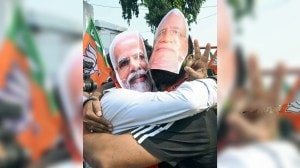Graveyard beat
The poet was wrong: the grave is a private place where, sometimes, sweethearts do embrace

On a hilly stretch of land dusted with the wings of sycamore seeds, love stories lie underground with the dead. There is the human heart buried next to the man who first captured it. The body of a banker whose wife left him for a famous actor. The couple hit by a train after a wedding reception.
Time threatened to wash away the tales of romance trapped in Laurel Hill Cemetery, a Victorian-style graveyard overlooking the Schuylkill River.
Along came Gwen Kaminski, a history buff who knew heartbreak. She worked in the cemetery’s main office, which held a rich archive of yellowed burial records. Kaminski wondered what lessons loomed behind those faded, unfamiliar names etched in dirt-smudged stone?
In the office, she learned of Mary Peterson, who died December 7, 1912. Her body was buried with her second husband in another cemetery—but she had requested her heart be removed and interred at Laurel Hill, alongside her first husband, Thomas Howard Peterson.
Peterson’s story inspired her. Kaminski began digging for more tales. Finally, she asked Laurel Hill’s executive director, Ross L. Mitchell, if she could host a tour. She would call it: “Love Stories of Laurel Hill.”
On the chosen day, Valentine’s Day, rain danced on the graves. But Kaminski would not cancel. Nearly 50 people had signed up, mostly couples. A middle-age couple with arms linked around each other’s waists. A young couple holding hands. An elderly man who visits cemeteries around the world as a hobby.
Just after 2 p.m., Kaminski grabbed led the crowd down a path. She had many stories to tell.
There was one from 1930 about husband and wife Ulric and Katherine Dahlgren, who attended a wedding in which Ulric served as an usher. During the reception, Ulric noticed the newlyweds setting off for their honeymoon. Ulric grabbed his wife and tried to chase them down to say goodbye. But an oncoming train hit their car, killing Ulric. Katherine survived.
Kaminski talked of Leo and Ralda Davendish. The couple dated for seven years before marrying. Three weeks after their wedding in 2001, Ralda died of a brain aneurysm. Ralda was buried at Laurel Hill, and, shortly after, Leo took a job at the cemetery office, Kaminski said, “undoubtedly as a way to still be close to her.”
Kaminski stopped at the graves of Charles and Elvira Ellet, which she had decorated with roses and American flags. Forced one day to attend a social event, Charles met “Ellie.” They married on October 31, 1837, and had four children. During the Civil War, he was shot in the knee on June 6, 1862. He wrote to Ellie: “my anxiety is now for you. Join me here my dear wife and let us study out the future and talk over the past.”
When Ellie arrived at his bedside on June 21, he was dead. She buried him at Laurel Hill on June 27, 1862. “Only two days later,” Kaminski said, “Ellie died of a broken heart.”
Opened in 1836, Laurel Hill has 11,000 family lots, with nearly 100,000 people buried here. The dead include six Titanic shipwreck victims, founders of the Republican Party, and 40 generals of the Civil War.
The tour group stopped before a tall vase-shaped monument. The words engraved in stone read: “Tout Passe Except Love That Goes on Forever.” A red-framed copy of a New York Times notice published in 1914 sat propped against the stone. It announced the engagement of Theodore and Violet Jaeckel. When Violet died in 1926, her ashes were interred at Laurel Hill inside an urn. Theodore remarried nine years after Violet’s death, but died a few months later. His ashes, Kaminski told the group, “mingled with Violet’s for all of eternity.”
The tour ended with Etta James singing At Last on a portable CD player at a wine-and-cheese reception in the cemetery’s gatehouse.
After the people left, Kaminski sat at a scarred wooden table reflecting on what led her to these stories. She has read hundreds of epitaphs. One phrase she sees over and over: “Love is stronger than death.” – Erika Hayasaki LAT-WP



- 01
- 02
- 03
- 04
- 05



























